The factory SJ23 rudder has a dragging attitude that creates that occasional
"heavy" feeling. In addition, the trailing blade sweeps against the
outboard propeller. I don’t know to what degree
an SJ23 rudder has been
experimented with but I am once again playing with mine. After
sailing for a summer I have a good feel for what the boat could use. It often
felt there was a LOT of weather helm, unless I was using the
150% jib or my drifter that is probably closer to a 170%. In a stiff breeze it handled the
150% well enough but it would likely have been better to run the 100% in
that wind. So I did a lot of research and decided the rudder
is an antiquated design. I felt that if the rudder is balanced by
swinging it forward a bit and changing the profile it should solve both
problems. The work
in progress so far:
- The blade was sanded down to the factory
shape (the foil section is too thin... NACA 0009 foil profile or less) and will
be reshaped to a more modern high aspect, (NACA0012 foil
profile). (See Tech Tip B09).
- The blade stopper was modified to allow it to swing to near vertical.
The transom is sloped about 720 with 900 being vertical.
- A pulley and anchor were molded in for the hold down line. (See
Tech Tip B10).
|
Kevin removed material from the stopper so the blade
passes forward of the original straight line shown by the straight
edge (level). He has also ground into the foam of the blade to
achieve the desired shape. This is obviously a major project.
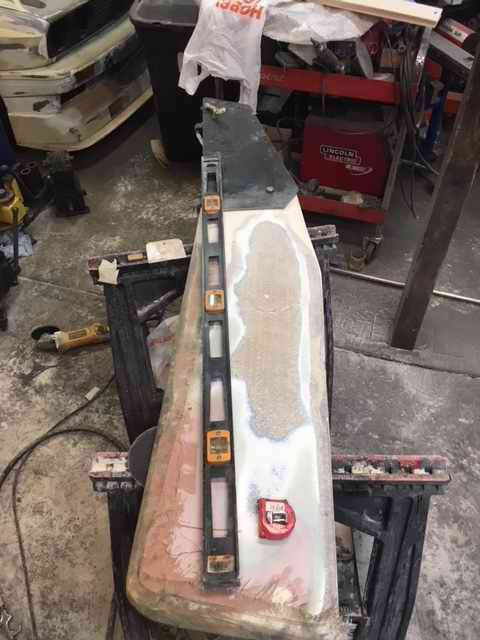
|
The tip of the blade was extended with balsa core using
(2x3x12)" blocks carved to fit with a good glue surface for the
Gorilla Glue. Think of the
Spitfire wing and the mobility it had over its adversaries.
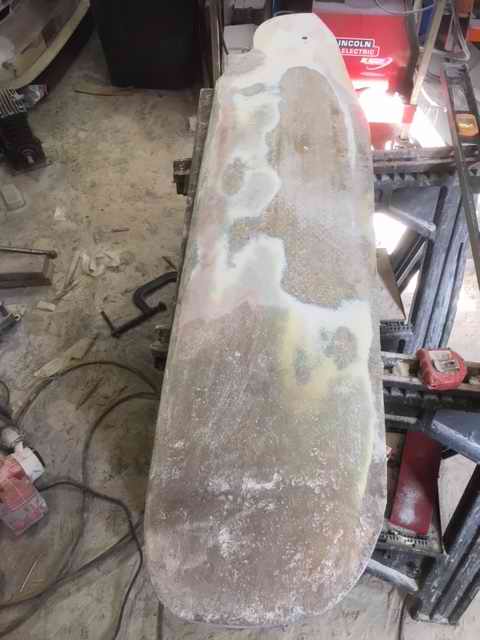
|
| Eye balling the new shape of the blade with a
belt sander.
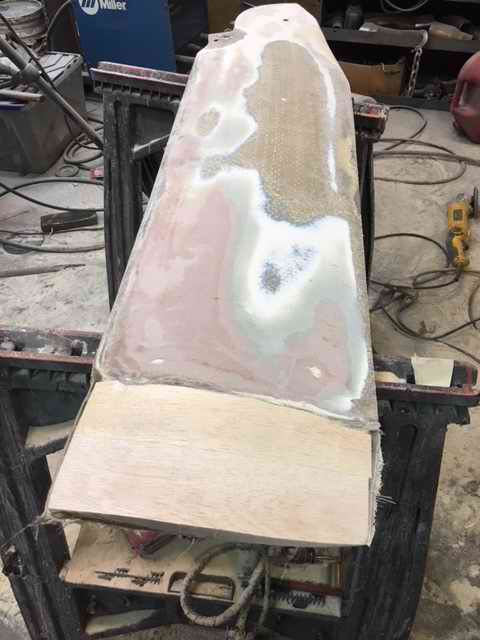
|
Eye balling the new shape of the blade with a
belt sander.
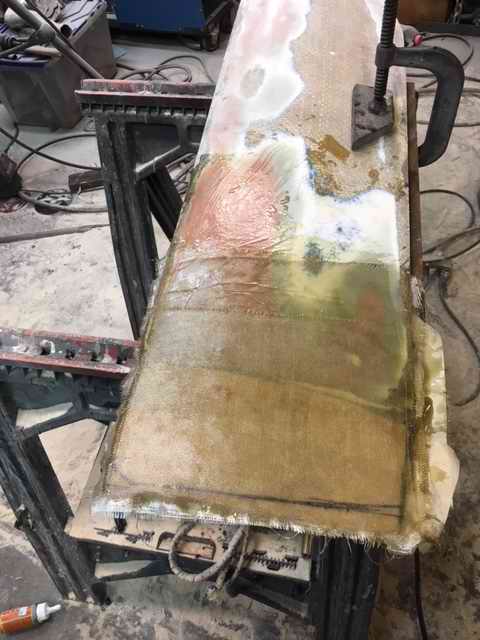
|
|
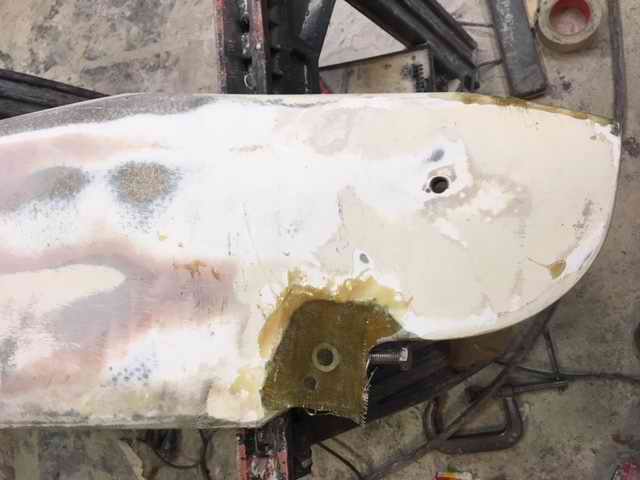 At
left you can see the new SS bolt imbedded in the top of the blade. This is
part of the internal lift system as per
Tech Tip B10. At
left you can see the new SS bolt imbedded in the top of the blade. This is
part of the internal lift system as per
Tech Tip B10.
The blade extension will make the rudder about (6-8)” deeper from the factory rudder,
which is
still less than centerboard depth. With the kick up feature, I’m not
concerned about damage since the blade is reinforced in key areas
to handle an impact.
I've labored over the design and implementation of this. At
worst case it will create more drag because it’s too deep (unlikely).
That being the case I can
rake the blade further aft by pulling the blade lift line. If
sea trials show this is the optimum angle I can add material to the blade
stop, allowing it to trail a bit aft again. This is relatively easy to do.
|
|
|
|
How
the blade is shaped now... Notice added fibreglass over blade tip and
leading edge for creation of the NACA 0012 foil shape. The blade chord is about 13” at top. It tapers
slowly to about 12” then to 11” near the bottom for the final
elliptical shape. It also tapers proportionally following foil
shape (gets thinner). Notice the notch at the leading edge to clear the
gudgeon.
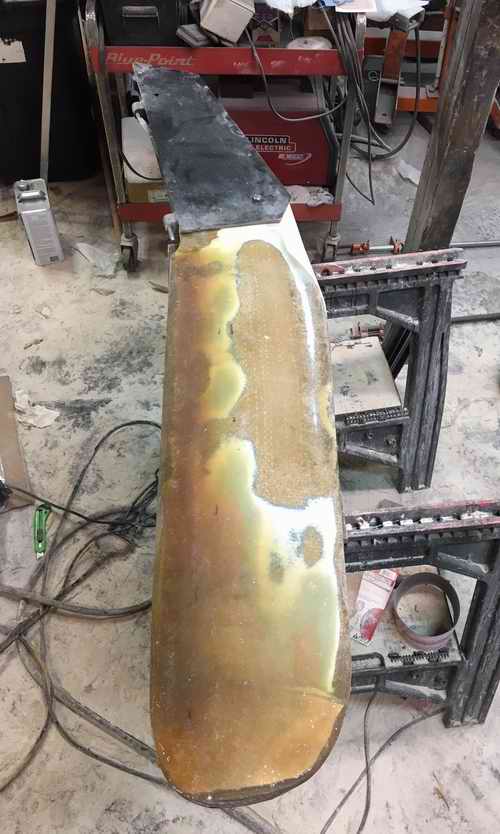
|
Kevin wasn't happy with the aspect of the rudder
planform. So he shaped it more and the project is getting
closer to completion. It is difficult to visualize the shape when it
is white. There should be one more coat of fibreglass, the final
sanding and painting. The blade is pretty thin near the tip.
It should be very efficient.
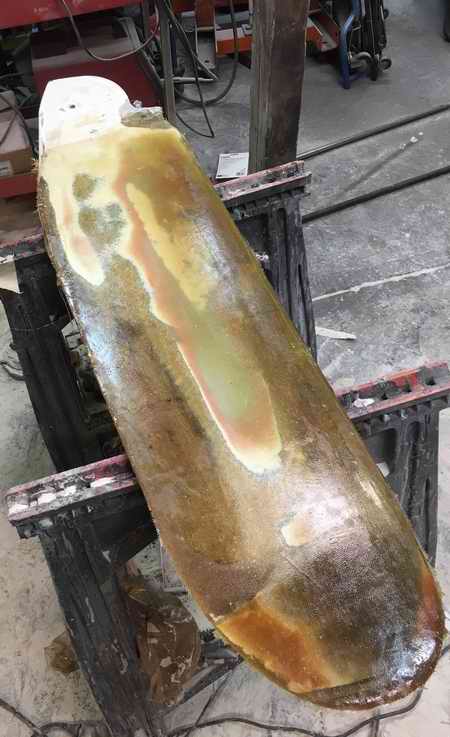
|
|
RIGHT - The blade painted. As an "experiment"
painting is easier than gel coat.
BELOW - The last two layers of fibreglass are on
over the final shape and the hinge bushings were installed.
Shown below is the dry fit of the final assembly. A portion of
the blade is forward of the pivot axis to create a balance. The
blade now measures more than 3' below the water line.
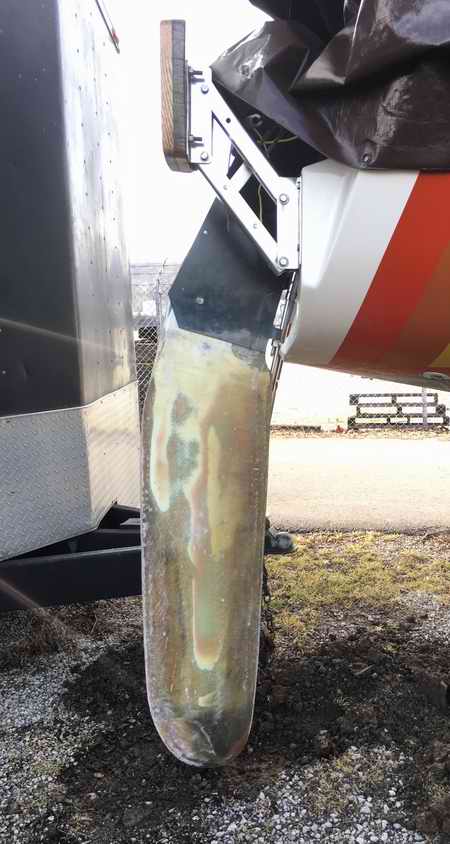
|
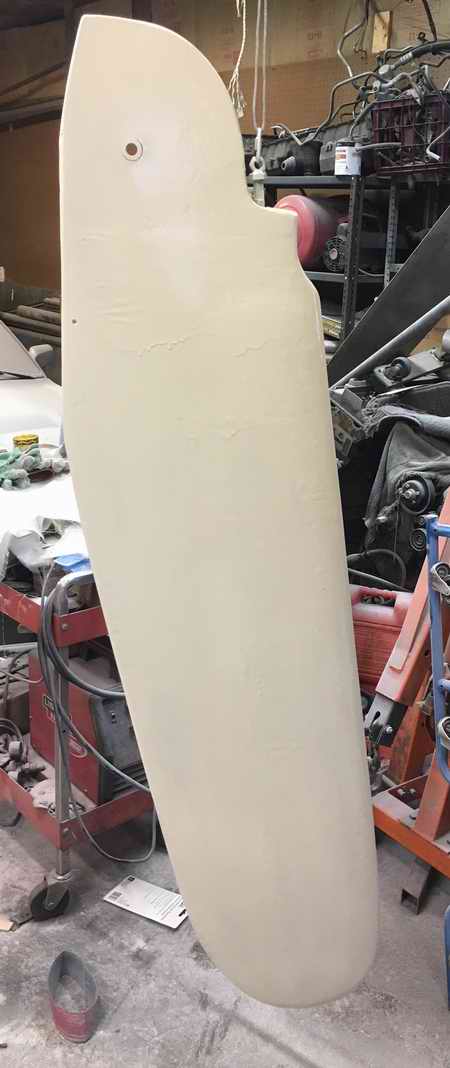
|
|
The lift system for the blade is a CL253 (2:1) block
for kite surfing or a trapeze with a swivel pulley at the top
mounted on the back of the tiller. Together with the internal
pull down system (Tech Tip B10)
the blade can positioned at any angle. It can obviously be
pulled well out of the water.
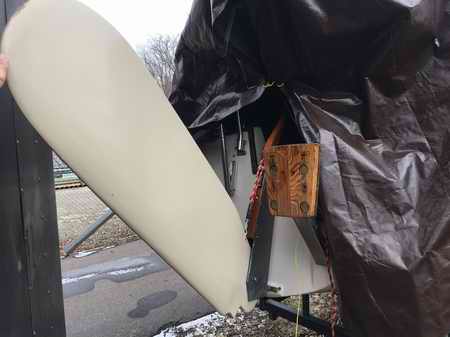
The total height of the rudder with head is 72 3/4".
This is almost 3 1/4" taller than factory height. But because
it is more vertical I can't tell how much deeper it is except that I
have to lower the trailer tongue all the way and dig a significant
hole to hang the rudder on the transom. |
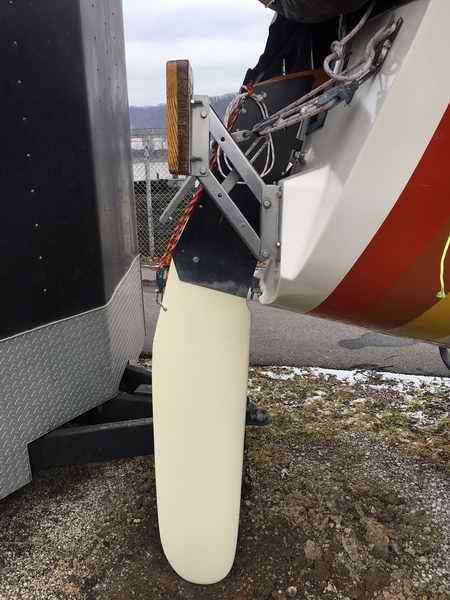
|
|
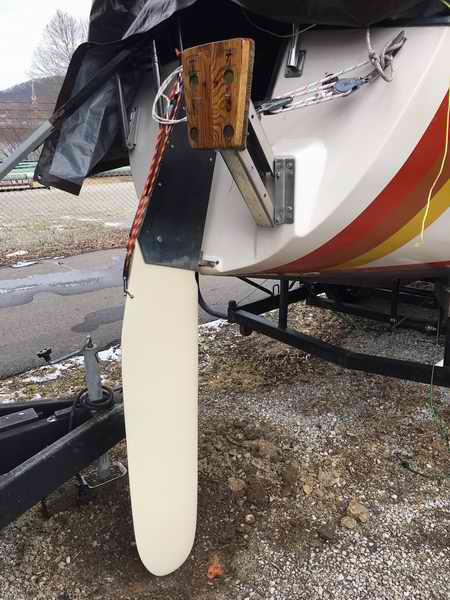
|
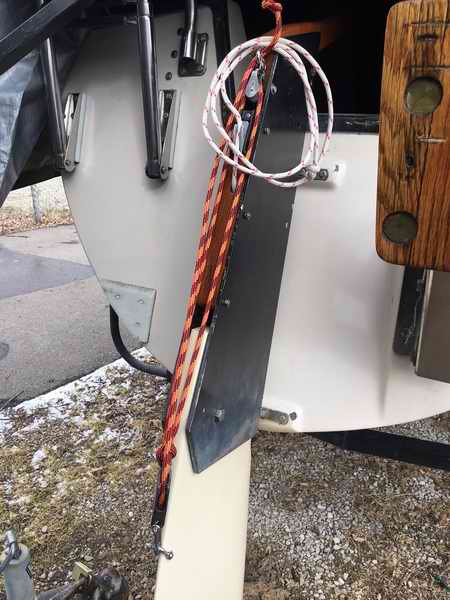
|
If all goes well the rudder modification should add
significant pointing ability with easier/lighter tiller effort and handle better at all speeds including
backing down. In a light breeze
the hull should have less leeway with more speed. It will generate more
more lift, raising the stern, similar to shifting weight to the
bow if my visualization is correct. I will never have to worry about
the propeller hitting the rudder again since the blade will be forward of
it. It should have more control with less effort at every heel
angle.
2018-07-17 - I took the new rudder out for a sea trial
and the tiller was crazy light with pretty much zero feel. Good to have a little feel. The foil shape, combined with the gain
in size basically made the rudder more efficient compared to
the keel. This is the careful balancing act that has to be
maintained as I’ve discovered. The modified rudder has too much
lift compared to the keel. So shortening it closer to the original
length will likely correct the effect. Backing the boat down with
the vertical rudder was a dream. Handling was great except it was
a nervous feeling. So it makes sense to me that a smaller blade
is my first course. Then again playing with drag angle.
Kevin Kreisa
Kevin has already modified his new rudder. Stay tuned for updates as Kevin field trials
it.
|




 At
left you can see the new SS bolt imbedded in the top of the blade. This is
part of the internal lift system as per
At
left you can see the new SS bolt imbedded in the top of the blade. This is
part of the internal lift system as per 






